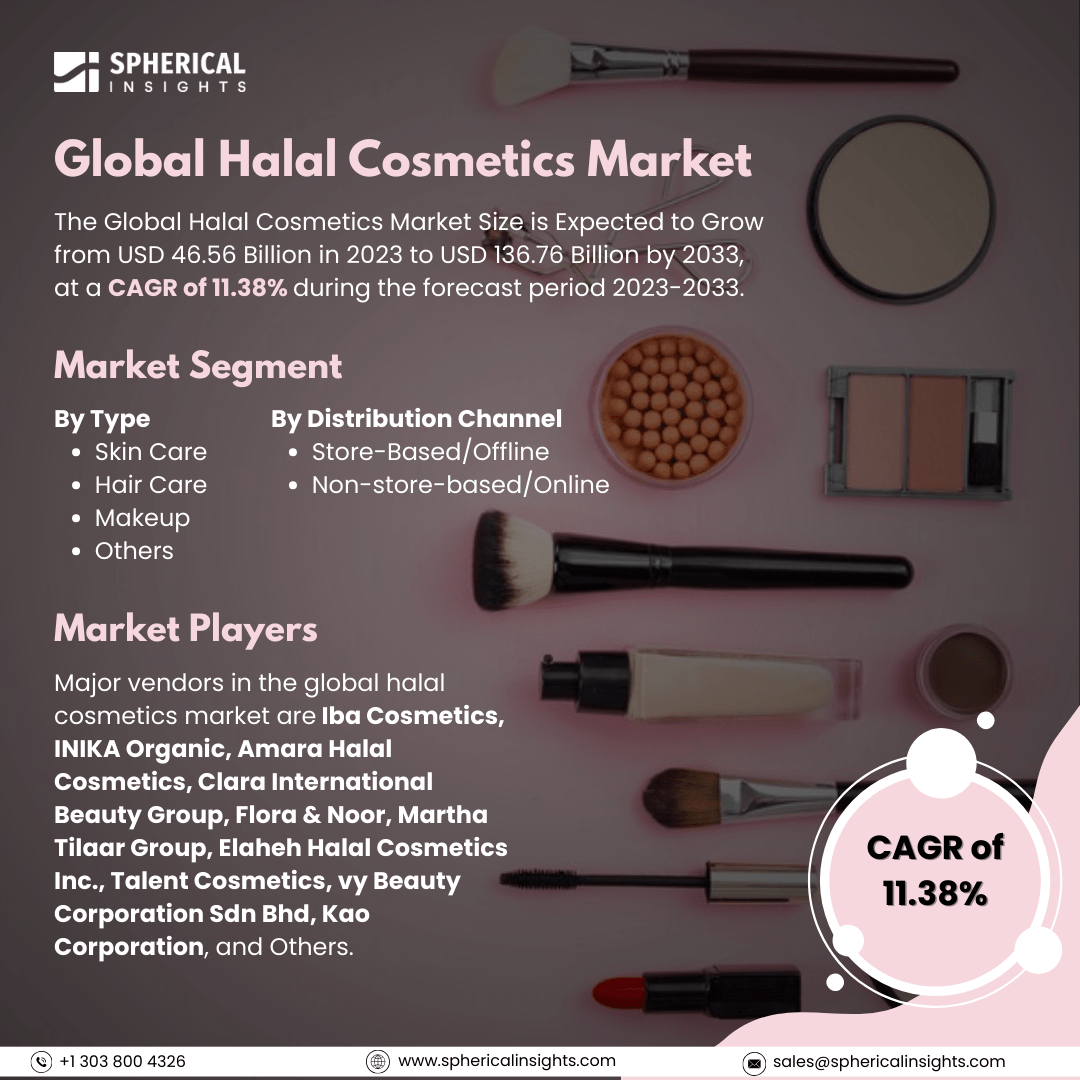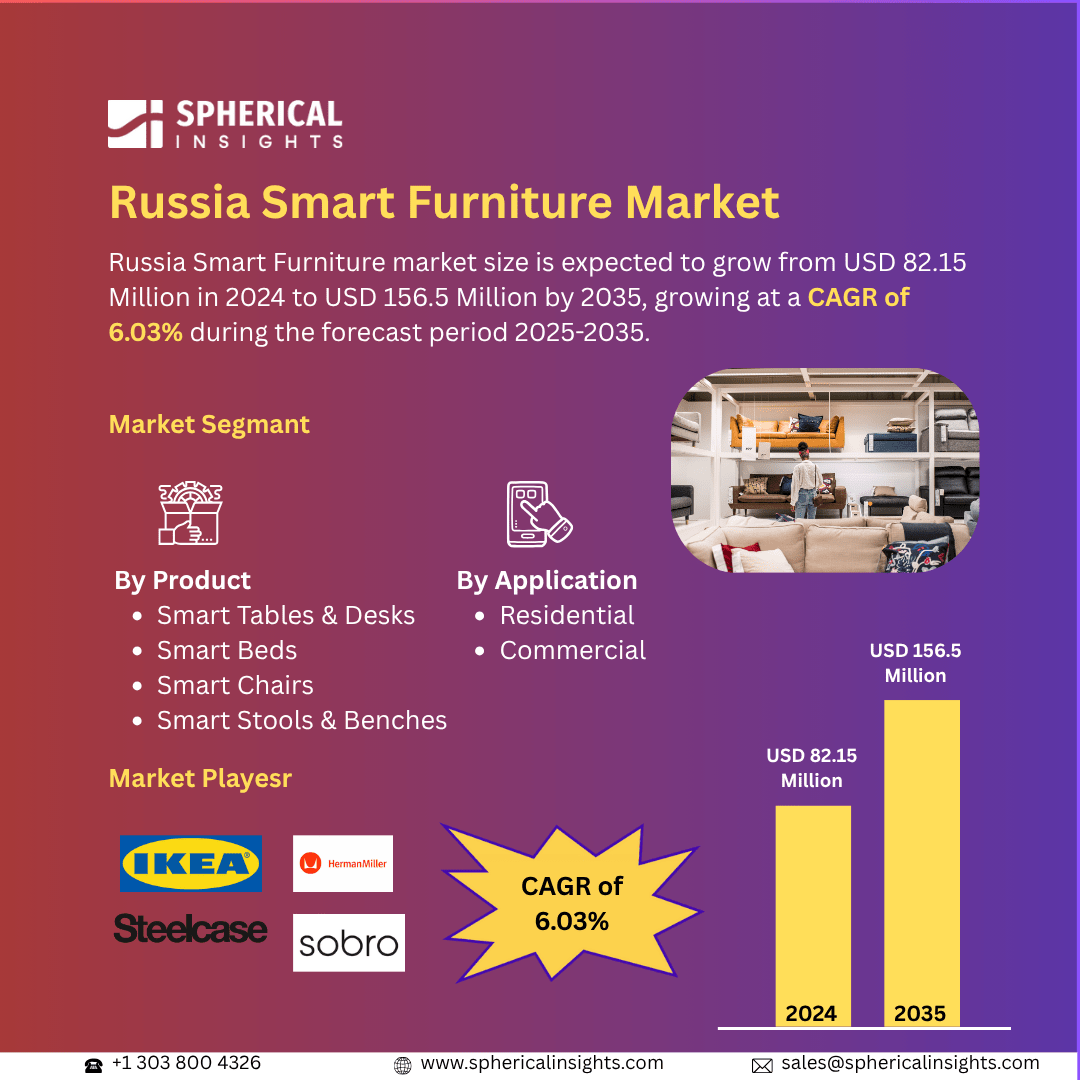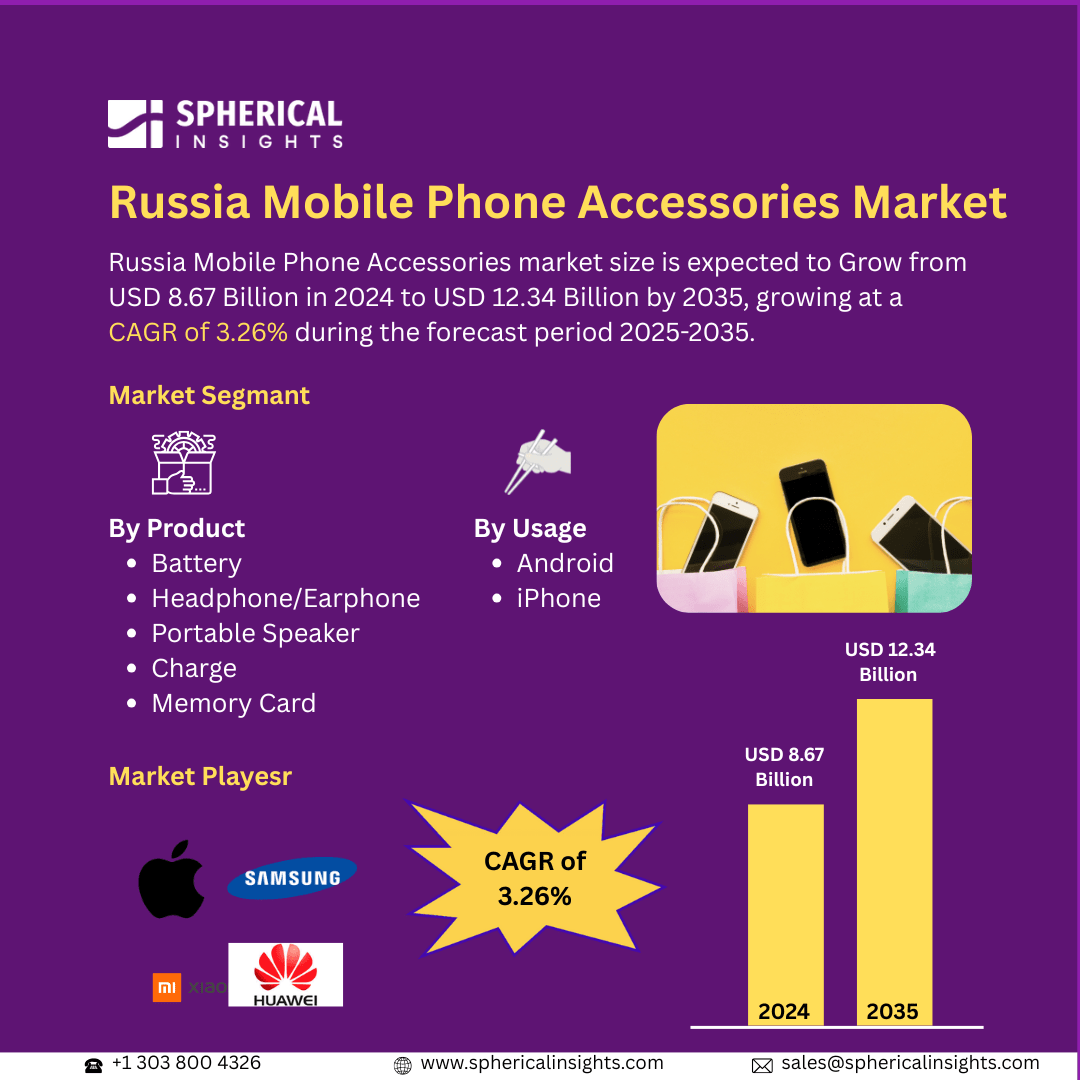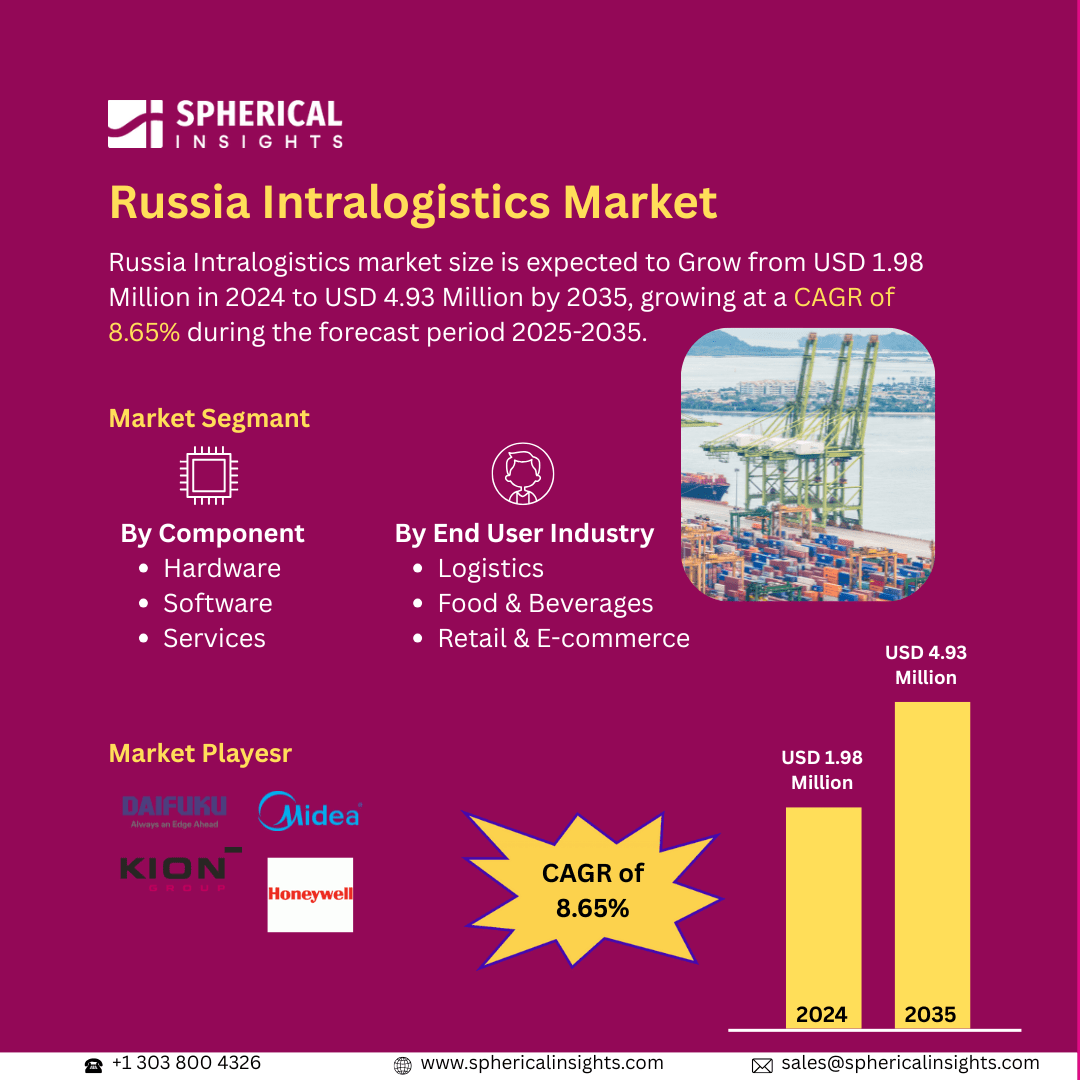Global Halal Cosmetics Market Size to Exceed 136.76 Billion by 2033
According to a research report published by Spherical Insights & Consulting, The Global Halal Cosmetics Market Size is Expected to Grow from USD 46.56 Billion in 2023 to USD 136.76 Billion by 2033, at a CAGR of 11.38% during the forecast period 2023-2033.
Browse 210 market data Tables and 45 Figures spread through 190 Pages and in-depth TOC on the Global Halal Cosmetics Market Size, Share, and COVID-19 Impact Analysis, By Type (Skin Care, Hair Care, Makeup, and Others), By Distribution Channel (Store-Based/Offline and Non-store-based/Online), and By Region (North America, Europe, Asia Pacific, Latin America, Middle East, and Africa), Analysis and Forecast 2023 – 2033
The halal cosmetics market is the international industry dedicated to manufacturing, distribution, and sale of cosmetics and personal care products that adhere to Islamic law (Shariah). Such products do not contain haram (prohibited) components, including alcohol and animal-derived ingredients, and are produced using halal-certified operations. The market comprises skincare, haircare, makeup, and perfumes for Muslim and non-Muslim buyers looking for ethical, cruelty-free, and high-quality beauty products. Moreover, the halal cosmetics market is propelled by the rising population of Muslims, rising demand for ethical and cruelty-free beauty care products, and stringent halal certification laws. Growing halal industries, enhanced disposable incomes, and expanding e-commerce platforms complement market growth even further. Buyers demand organic, alcohol-free, and sustainable beauty products, promoting innovation and worldwide adoption. However, the halal cosmetics Market is subject to such restraints as high costs of certification, poor consumer knowledge, limited product availability in some areas, and competition from mainstream brands, that impede market penetration and development.
The skin care segment accounted for the largest share of the global halal cosmetics market in 2023 and is anticipated to grow at a significant CAGR during the forecast period.
On the basis of type, the global halal cosmetics market is divided into skin care, hair care, makeup, and others. Among these, the skin care segment accounted for the largest share of the global halal cosmetics market in 2023 and is anticipated to grow at a significant CAGR during the forecast period. Powered by increasing demand for halal-certified moisturizers, serums, and anti-aging creams. Growing consumer knowledge of natural, alcohol-free, and cruelty-free skincare solutions drives growth, with brands concentrating on organic and dermatologically tested products to fulfill market demand.
The store-based/offline segment accounted for a substantial share of the global halal cosmetics market in 2023 and is anticipated to grow at a rapid pace during the projected period.
On the basis of the distribution channel, the global halal cosmetics market is divided into store-based/offline and non-store-based/online. Among these, the store-based/offline segment accounted for a substantial share of the global halal cosmetics market in 2023 and is anticipated to grow at a rapid pace during the projected period. This is propelled by customer desire for in-hand product testing, brand loyalty, and individualized shopping. Sales are dominated by supermarkets, specialty stores, and pharmacies, but online channels are quickly increasing because of e-commerce growth and ease of access to halal-certified products.
Asia Pacific is projected to hold the largest share of the global halal cosmetics market over the projected period.
Asia Pacific is projected to hold the largest share of the global halal cosmetics market over the projected period. This is pumped up by high Muslim populations, increasing disposable incomes, and a growing awareness of halal-certified cosmetics. Indonesia, Malaysia, and India dominate the market, aided by government policies, good retail infrastructure, and increasing demand for ethical, alcohol-free, and organic personal care.
North America is expected to grow at the fastest CAGR of the global halal cosmetics market during the projected period. This is driven by growing demand for cruelty-free, organic, and ethical beauty products, rising Muslim consumer expenditure, and expanding availability of halal-certified brands. The U.S. and Canada dominate the market, aided by e-commerce growth, multicultural consumer tastes, and mainstream beauty brands embracing halal-certified formulations.
Company Profiling
Major vendors in the global halal cosmetics market are Iba Cosmetics, INIKA Organic, Amara Halal Cosmetics, Clara International Beauty Group, Flora & Noor, Martha Tilaar Group, Elaheh Halal Cosmetics Inc., Talent Cosmetics, vy Beauty Corporation Sdn Bhd, Kao Corporation, and Others.
Key Target Audience
- Market Players
- Investors
- End-users
- Government Authorities
- Consulting and Research Firm
- Venture capitalists
- Value-Added Resellers (VARs)
Recent Development
- In April 2023, NUME-Lab, which is a halal skincare brand from Switzerland, declared that it would approach South East Asian markets like Singapore, Malaysia, and Hong Kong. NUME-Lab makes cleansers, face creams (face care items), night serums, and eye serums. The organization is going to establish operations in these Asian nations via distributorships in the short term.
Market Segment
This study forecasts revenue at global, regional, and country levels from 2023 to 2033. Spherical Insights has segmented the global halal cosmetics market based on the below-mentioned segments:
Global Halal Cosmetics Market, By Type
- Skin Care
- Hair Care
- Makeup
- Others
Global Halal Cosmetics Market, By Distribution Channel
- Store-Based/Offline
- Non-store-based/Online
Global Halal Cosmetics Market, By Regional
- North America
- Europe
- Germany
- UK
- France
- Italy
- Spain
- Russia
- Rest of Europe
- Asia Pacific
- China
- Japan
- India
- South Korea
- Australia
- Rest of Asia Pacific
- South America
- Brazil
- Argentina
- Rest of South America
- Middle East & Africa
- UAE
- Saudi Arabia
- Qatar
- South Africa
- Rest of the Middle East & Africa



